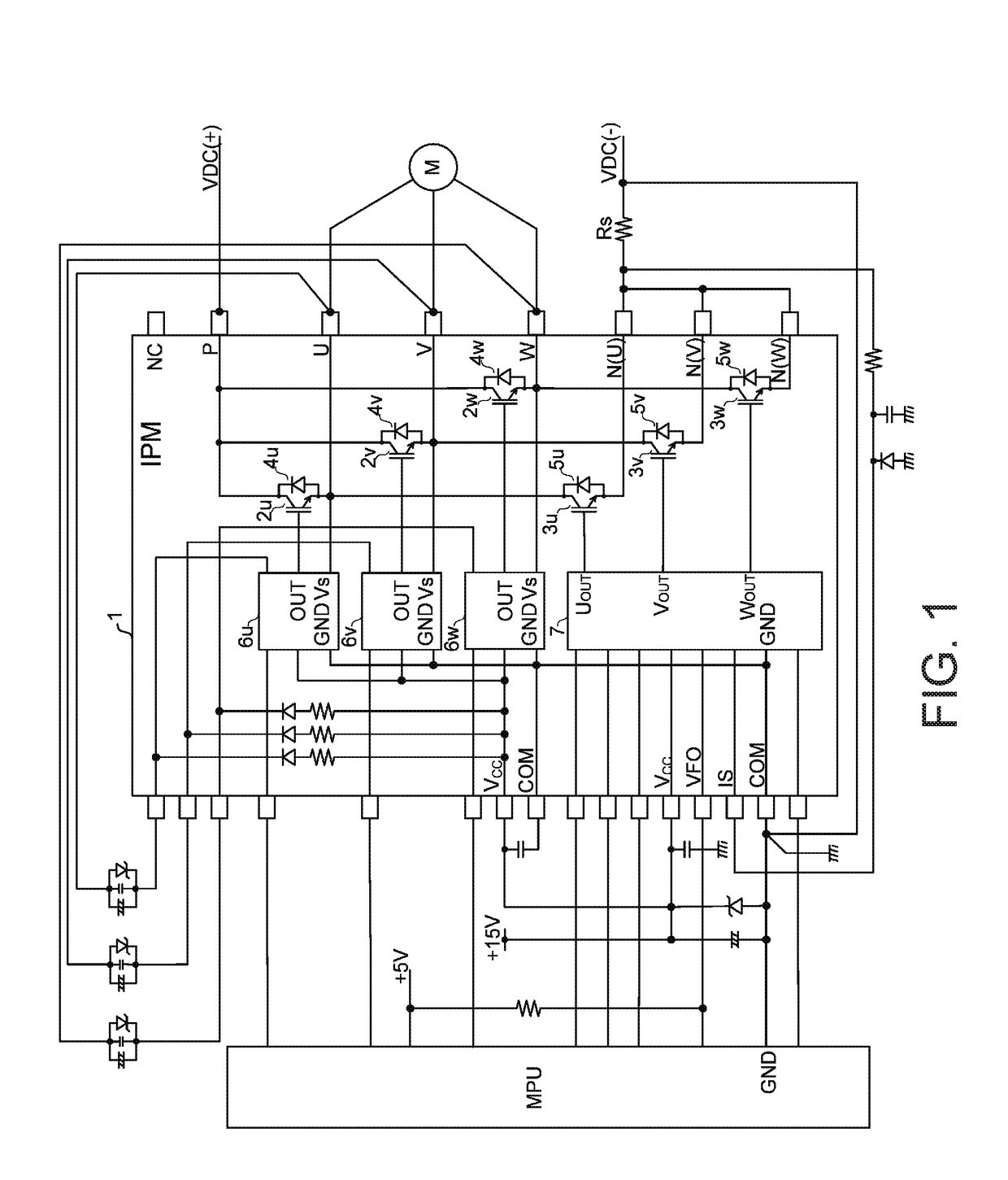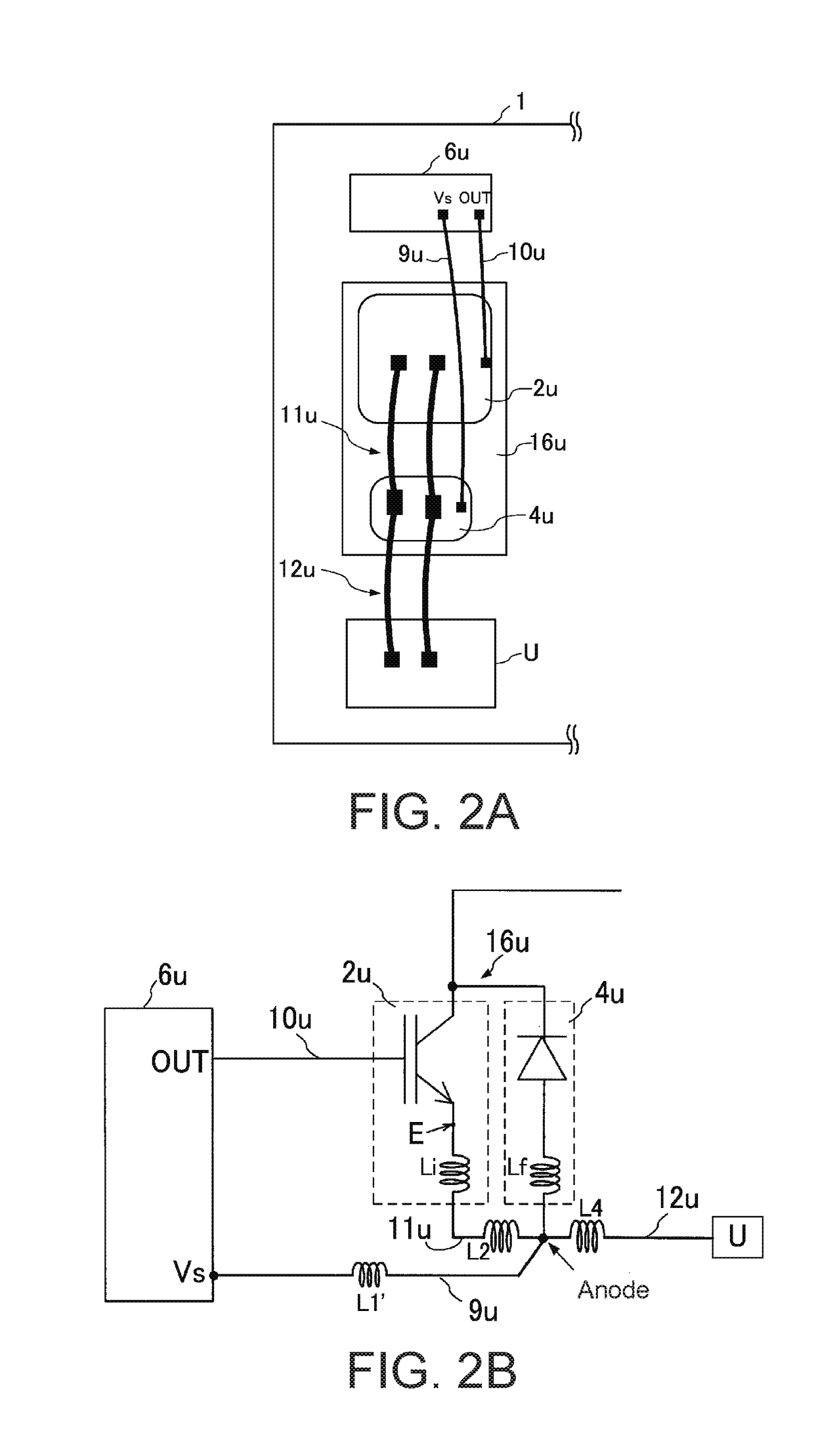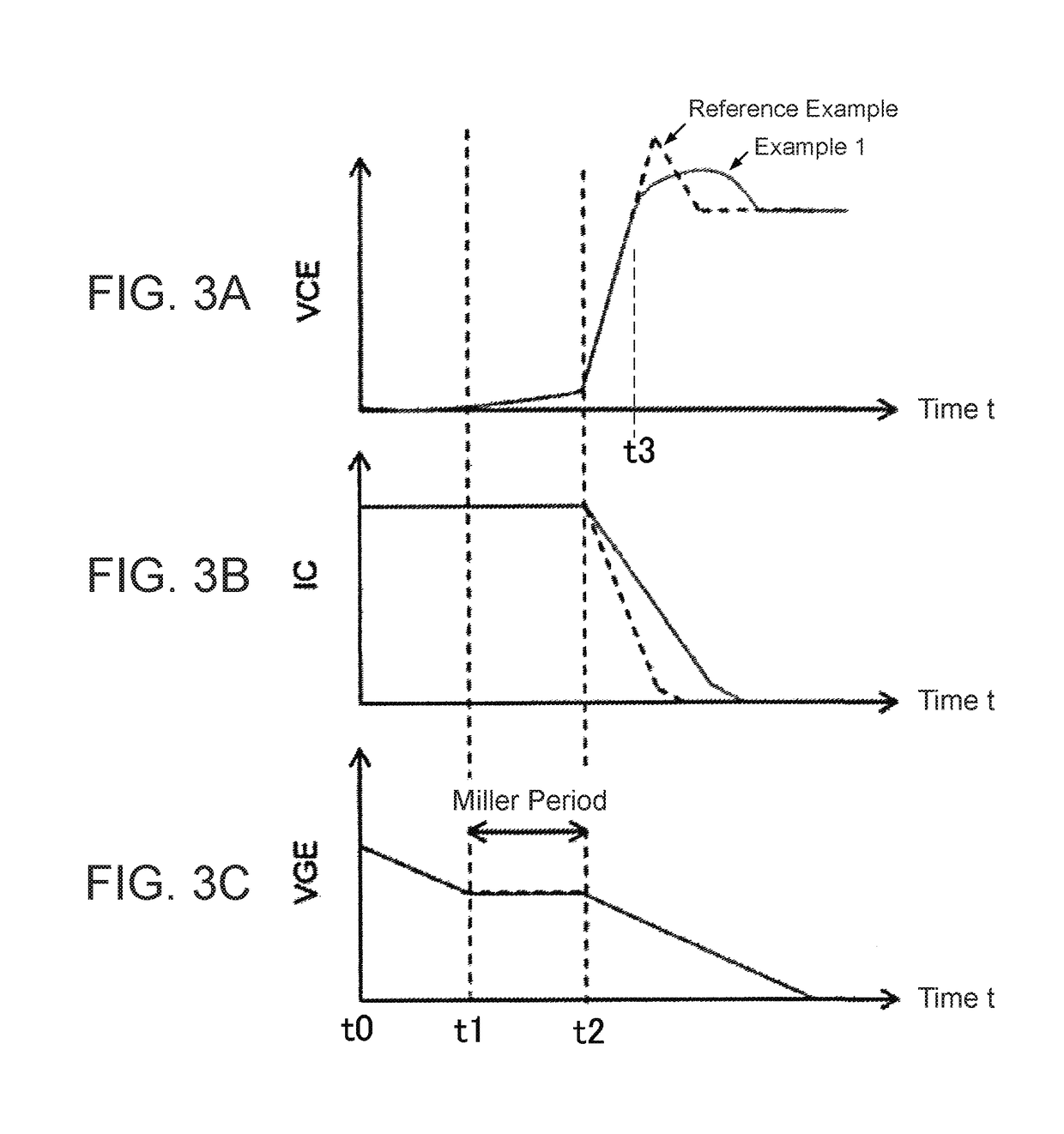Semiconductor module
- Summary
- Abstract
- Description
- Claims
- Application Information
AI Technical Summary
Benefits of technology
Problems solved by technology
Method used
Image
Examples
embodiment 1
[0051]FIG. 2A illustrates the interior module wiring configuration of the IPM 1 according to Embodiment 1, and FIG. 2B illustrates the circuit configuration of the same. Note that although FIGS. 2A and 2B illustrate the U-phase circuit among the three phases as a representative example, the same configuration can be applied to the other phases as well.
[0052]As illustrated in FIG. 2A, in the IPM 1, an HVIC 6u (6v, 6w) and an external terminal U (V, W) are arranged on an insulating substrate, and between the HVIC 6u (6v, 6w) and the external terminal U (V, W), an IGBT 2u (2v, 2w) and an FWD 4u (4v, 4w) are arranged in that order from the HVIC 6u (6v, 6w) side.
[0053]Moreover, a reference voltage Vs of the HVIC 6u (6v, 6w) is connected to the anode of the FWD 4u (4v, 4w) via a bonding wire 9u (9v, 9w). Furthermore, an output OUT of the HVIC 6u (6v, 6w) is connected to the gate of the IGBT 2u (2v, 2w) via a bonding wire 10u (10v, 10w). The emitter of the IGBT 2u (2v, 2w) is connected to ...
embodiment 2
[0071]Next, Embodiment 2 of the present invention will be described. In the present embodiment, in contrast to the wiring configuration illustrated in FIG. 2A, the bonding wire 9u (9v, 9w) having the inductance L1′ and the bonding wire 11u (11v, 11w) having the inductance L2 are arranged neighboring one another. The resulting magnetic coupling between the inductances L1′ and L2 creates a counter-electromotive force in the inductance L1′ of the bonding wire 9u (9v, 9w) at turn-off of the IGBT 2u (2v, 2w), and this counter-electromotive force is utilized to reduce the gate drive capability of the IGBT 2u (2v, 2w) and to thereby reduce the surge voltage VCE (surge) at turn-off.
[0072]FIG. 6A illustrates the interior module wiring configuration of an IPM 1 according to Embodiment 2 of the present embodiment, and FIG. 6B illustrates the circuit configuration of the same. Note that although FIG. 6A illustrates the U-phase circuit among the three phases as a representative example, the same...
PUM
 Login to View More
Login to View More Abstract
Description
Claims
Application Information
 Login to View More
Login to View More - R&D
- Intellectual Property
- Life Sciences
- Materials
- Tech Scout
- Unparalleled Data Quality
- Higher Quality Content
- 60% Fewer Hallucinations
Browse by: Latest US Patents, China's latest patents, Technical Efficacy Thesaurus, Application Domain, Technology Topic, Popular Technical Reports.
© 2025 PatSnap. All rights reserved.Legal|Privacy policy|Modern Slavery Act Transparency Statement|Sitemap|About US| Contact US: help@patsnap.com



